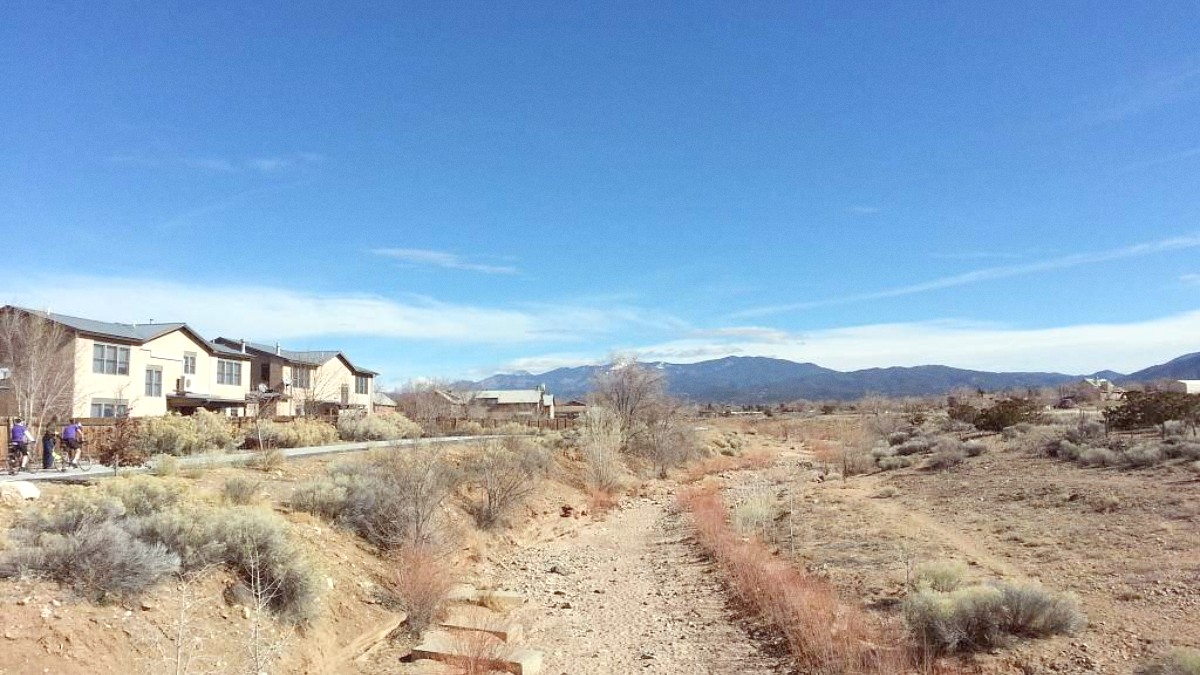
USA
Santa Fe is more than just a dot on the map; it is a living canvas. Here, every alleyway may show a hidden gallery, every restaurant has a taste of unique New Mexican chile, and every sunset transforms the sky into an artwork of fiery oranges and soft purples. The city invites you to slow your pace, to absorb the rhythms of a place shaped by diverse cultures and an enduring spirit. Come explore its adobe charm, its artistic pulse, and its profound connection to the land. You will discover why many call Santa Fe the "City Different." It has a memorable escape, whether you seek outdoor adventure, artistic inspiration, or a peaceful retreat.
Visitors often find themselves surprised by Santa Fe's particular allure. It lacks the towering skyscrapers of major metropolises or the sprawling beaches of coastal resorts. Instead, it has a subtle, layered beauty that unfolds with each discovery. Experience the quiet reverence of an ancient church, the lively chatter of a farmers market, or the contemplative silence of a desert vista. The atmosphere fosters creativity and reflection.
It encourages travelers to look closer, listen more intently, and taste with greater appreciation. You can spend hours wandering through its historic core, finding new details around every corner. This city encourages personal exploration and a connection with its heritage.
Santa Fe sits in a semi-arid, high-desert environment, approximately 7,200 feet (2,194 meters) above sea level. This elevation influences the city's climate, sunlight, and even the pace of life. These peaks, often snow-capped well into spring, create a stunning backdrop to the city's low-slung adobe architecture and define its eastern horizon. To the west, the Jemez Mountains frame distant views, contributing to the expansive sense of space.
The city's location means abundant sunshine year-round, averaging over 300 sunny days annually. The air is typically dry, notably outside the summer monsoon season. This dry climate, combined with the altitude, means temperatures can change significantly between day and night, even in summer. Mornings may be cool, leading to warm afternoons, then cooling down rapidly after sunset. You may need a Light jacket in the morning and evening, even if midday is warm. The dry air also means hydration becomes a constant consideration for visitors.
Some visitors experience mild symptoms like headaches, nausea, or fatigue for their first day or two.
Drink more water than you think you need. Limit alcohol, as it can worsen altitude effects.
Consider avoiding strenuous activity on your arrival day.
Intense UV radiation means wearing Sunscreen with a high SPF, a Wide-brimmed hat, and Sunglasses.
Hiking trails often start directly from the city's edge and ascend into the mountains.
The Rio Grande, New Mexico's lifeblood river, flows west of Santa Fe, carving its own dramatic gorge and creating opportunities for recreation further afield, like whitewater rafting or fishing. Santa Fe's setting is a defining feature, influencing everything from its building materials to the quality of light that draws artists here.
Hiking trails often start directly from the city's edge and ascend into the mountains, offering varying levels of challenge.
The Rio Grande provides opportunities for whitewater rafting or fishing further afield.
Santa Fe's setting is a defining feature, influencing everything from its building materials to the quality of light that draws artists here. It creates an unique outdoor playground.
Santa Fe is a deep and complex history, making it one of the oldest European-established cities in the United States. Founded as a Spanish colonial outpost in 1610, it predates Plymouth Colony by a decade. Its full name, La Villa Real de la Santa Fe de San Francisco de Asís (The Royal Town of the Holy Faith of Saint Francis of Assisi), points to its origins and the religious fervor of its founders. For centuries, it served as the capital of the Spanish province of Nuevo México, a vast and often challenging frontier. It sat at the northern terminus of the Camino Real de Tierra Adentro, a trade route stretching south to Mexico City, bringing goods, ideas, and people to and from the heart of New Spain.
Before the Spanish arrival, Ancestral Pueblo peoples inhabited the region for thousands of years, building sophisticated communities and developing intricate agricultural practices. Their enduring presence shaped the land and continues to influence Santa Fe's culture, art, and traditions. The Spanish reconquered the area in 1692, but the period of self-rule led to a more subtle interaction between the cultures, resulting in an unique blend evident today. This period saw the Spanish adopt some Pueblo building techniques and agricultural practices, while Pueblo communities incorporated elements of Spanish religion and livestock.
Founded in 1610, predating Plymouth Colony, it served as the capital of Nuevo México.
After reconquest, an unique blend of Native American and Spanish cultures arose.
Became a trading hub on the Santa Fe Trail in the 19th century, connecting the Southwest to the American frontier.
It later became the capital of the New Mexico Territory and, in 1912, the capital of the state of New Mexico. This layered history shows in its architecture, the blend of languages (English and Spanish), and the coexistence of Native American, Hispanic, and Anglo cultures.
Strict building codes preserve its historic aesthetic with low-slung buildings and earthy tones.
Canyon Road has over 100 galleries, from traditional Southwestern to contemporary pieces.
A modern artistic pulse with cutting-edge galleries and interactive installations like Meow Wolf.
The city has a relaxed pace, warm hospitality, and a deep connection to the land and its history.
It has an unique blend of experiences that appeal to a wide range of travelers.
A destination that delivers a distinct and memorable travel experience, leaving visitors refreshed and inspired.